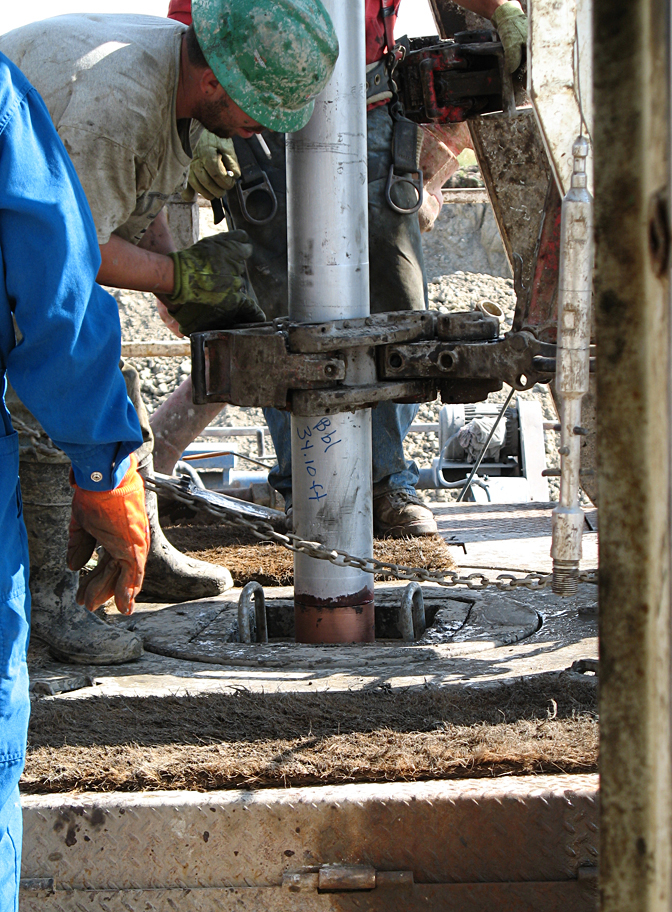As of April 2015, the Bakken Shale was producing 1.1 MMbbl/d of oil from almost 10,000 wells. But that’s the tip of the iceberg.
At the University of North Dakota’s Energy & Environmental Research Center (EERC), researchers were concerned about the low recovery factor in the play, on the order of just 4% to 6% of original oil in place. “We started looking at ways to meaningfully change that,” said John Harju, associate director for research.
Standard IOR techniques like waterflooding were quickly rejected because of the oil-wet nature of the rocks. The researchers then settled on examining the utility of CO2, and a research project was born.

Phase I
Harju said that the project was a “collision of opportunity and necessity.” The U.S. Department of Energy was interested in exploring carbon capture and sequestration, and using captured CO2 for EOR seemed like a win-win. “EERC has been busy looking at how we can take this challenge that the power sector has and try to create some economic return for the cost of capturing CO2,” Harju said. “EOR has been one of the things we’ve been looking at.”
Early industry efforts involved several field tests. None of them can be considered a technical success, he said, but they were instructive in the EERC consortium’s Phase I efforts and led to several laboratory tests and simulation work involving reservoir characterization.
Overall, Phase I led to several conclusions:
• CO2 has the potential to remove more than 90% of the oil in the reservoir rocks (Middle Bakken and Three Forks) and more than 60% of the oil in the shales (Upper and Lower Bakken);
• The CO2 flow will be dictated by the fractures, not the rock matrix;
• Therefore, it’s important to understand the natural fracture network; and
• Modeling results indicate that CO2 EOR is feasible.
Phase II
Harju said that the second phase actually consists of an “A” and “B” phase, but overall the goals are to select potential injection and production schemes as well as to determine whether to fracture the wells and which member to place them in. More experiments are required to improve the understanding of oil/ CO2/natural gas phase behavior and rates of CO2 diffusion in different rocks. And efforts to further improve reservoir characterization will include microfracture characterization, hydrocarbon extraction data on key Bakken and Three Forks lithofacies and integration of these improved data into the existing models.
Harju described Phase 2A as an attempt to marry the observations in the lab with actual field results. “We have Schlumberger, Baker Hughes and CMG all making meaningful contributions and helping us in the simulation space by providing their software platforms and their development teams, while Kinder Morgan’s reservoir simulation team has been actively engaged as well,”
he said. “It’s just physics, but it’s poorly understood at this point. So trying to upscale and model what we observe in the lab is challenging with traditional software packages.”
Phase 2B will involve the detailed field experimental work once a scheme is decided on in Phase 2A. Continental, Marathon, Hess and XTO are the “anchor” operating companies for this phase, and currently these companies are examining their portfolios to find the ideal test site for the demonstration project. This project could happen as early as late third-quarter 2015, he said.
As of press time, a site had not yet been selected. Harju said that choosing the site requires a balance between the design of the experiment and the economic constraints based on the current downturn. However, he said, with the rig count down, more staff time is available for these types of projects. “That’s a little bit of a silver lining for this project from that otherwise dark cloud of depressed prices,” he said.
The biggest challenge, oddly, will be sourcing the CO2. Despite the government’s incentives to capture carbon emissions, the Williston Basin has limited infrastructure. Harju said there is only one existing pipeline and two meaningful supplies of CO2 in the basin. While new sources are coming online and new pipelines are planned in the next few years, meaningful CO2 EOR in the Williston Basin could require as much as 200 Mt annually to achieve the estimated recovery potential. Current emissions from all of the coal-fired power plants in the state are 35 Mt/y.

Phase 3?
Phase 3 will likely take the learnings of Phase 2 to a commercial scale, Harju said. “As we contemplate Phase 2 right now, I think we’re comfortable that it’s a fairly limited injection volume in a very carefully designed way that will elucidate unknowns that we think we have new insights on,” he said. “Let’s say we answer all of the questions we had hoped to in Phase 2. Then, in my mind, Phase 3 would be a commercial-scale pilot project.”
The team also has been looking into opportunities with rich gas to evaluate the utility of some of the higher Btu gas as an EOR fluid. “Our lab work in that space is very encouraging, especially the higher Btu gas with considerable ethane, propane, butane, pentane and so on,” Harju said. “It tends to work really, really well in the lab work that we’ve seen thus far.”
Recommended Reading
Vermilion Energy to Acquire Canada's Westbrick for $745MM
2024-12-23 - Canada’s Vermilion Energy Inc. will acquire Westrbrick Energy’s Alberta Deep Basin assets, including 700 locations, for CA$1.075 billion.
The Midland—Oxy’s Second Growth Engine—Already Purring
2024-12-04 - From 18,000-ft laterals to new exploration in the Emma Barnett, Thaimar Ramirez, president and general manager of Oxy’s Midland Basin Business Unit, detailed the integration of its $12 billion CrownRock takeover.
Permian to Drive Output Growth as Other Basins Flatten, Decline–EIA
2025-01-14 - Lower 48 oil production from outside the Permian Basin—namely, the Bakken and Eagle Ford shales—is expected to flatten and decline in coming years, per new EIA forecasts.
Exxon’s Custom, Lightweight Proppant Boosts Permian EURs by 15%
2024-12-17 - Exxon is lowering drilling and completion costs, boosting EURs by 15% with custom proppant and considering upside from less developed Permian Basin zones.
Exxon: Longer Laterals, Cube Well Design Lowering Permian Costs
2024-12-11 - Exxon Mobil is boosting spending to grow global oil and gas production by 18% by 2030. U.S. rival Chevron Corp. recently said it’s cutting spending in favor of free cash flow.
Comments
Add new comment
This conversation is moderated according to Hart Energy community rules. Please read the rules before joining the discussion. If you’re experiencing any technical problems, please contact our customer care team.





